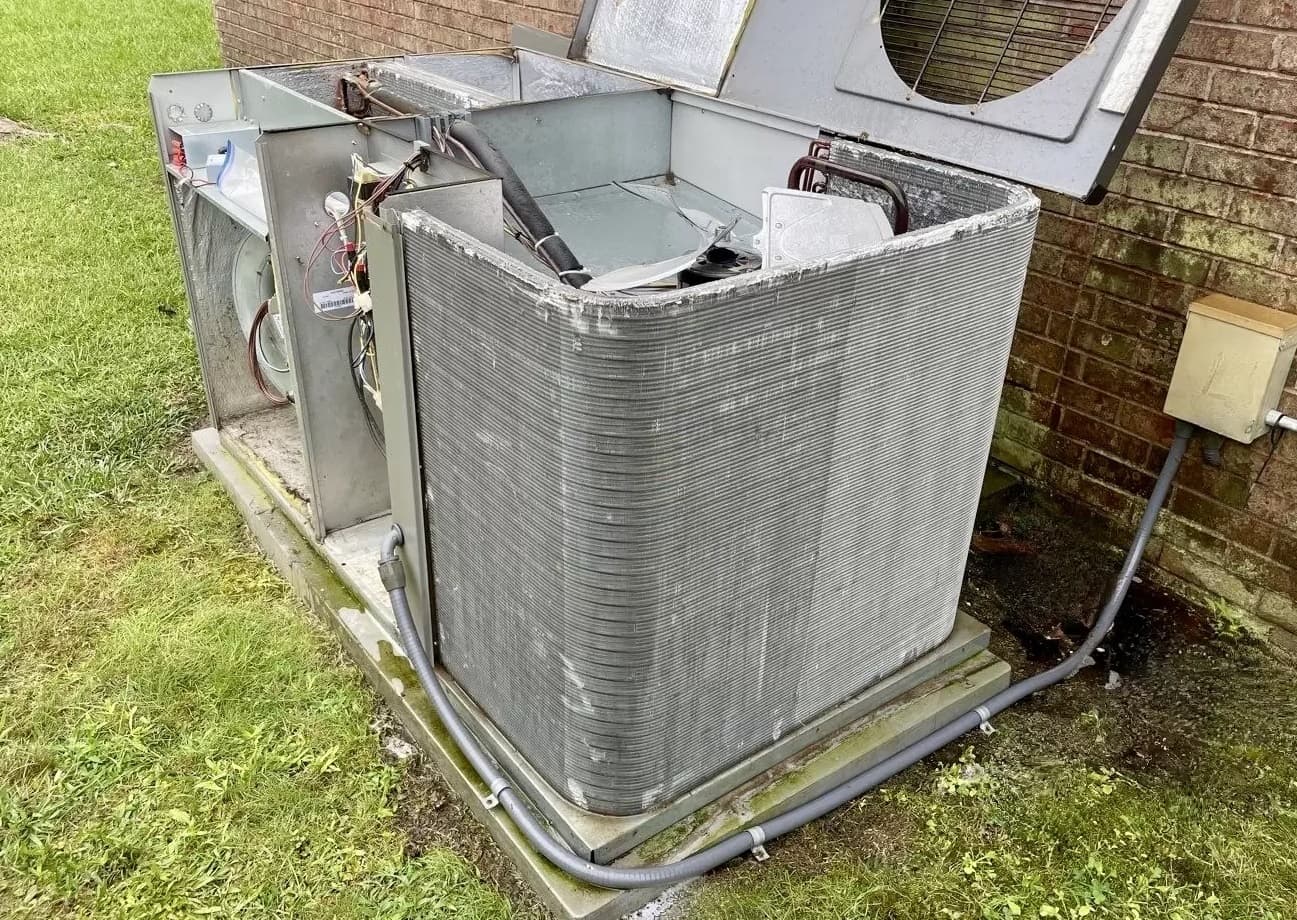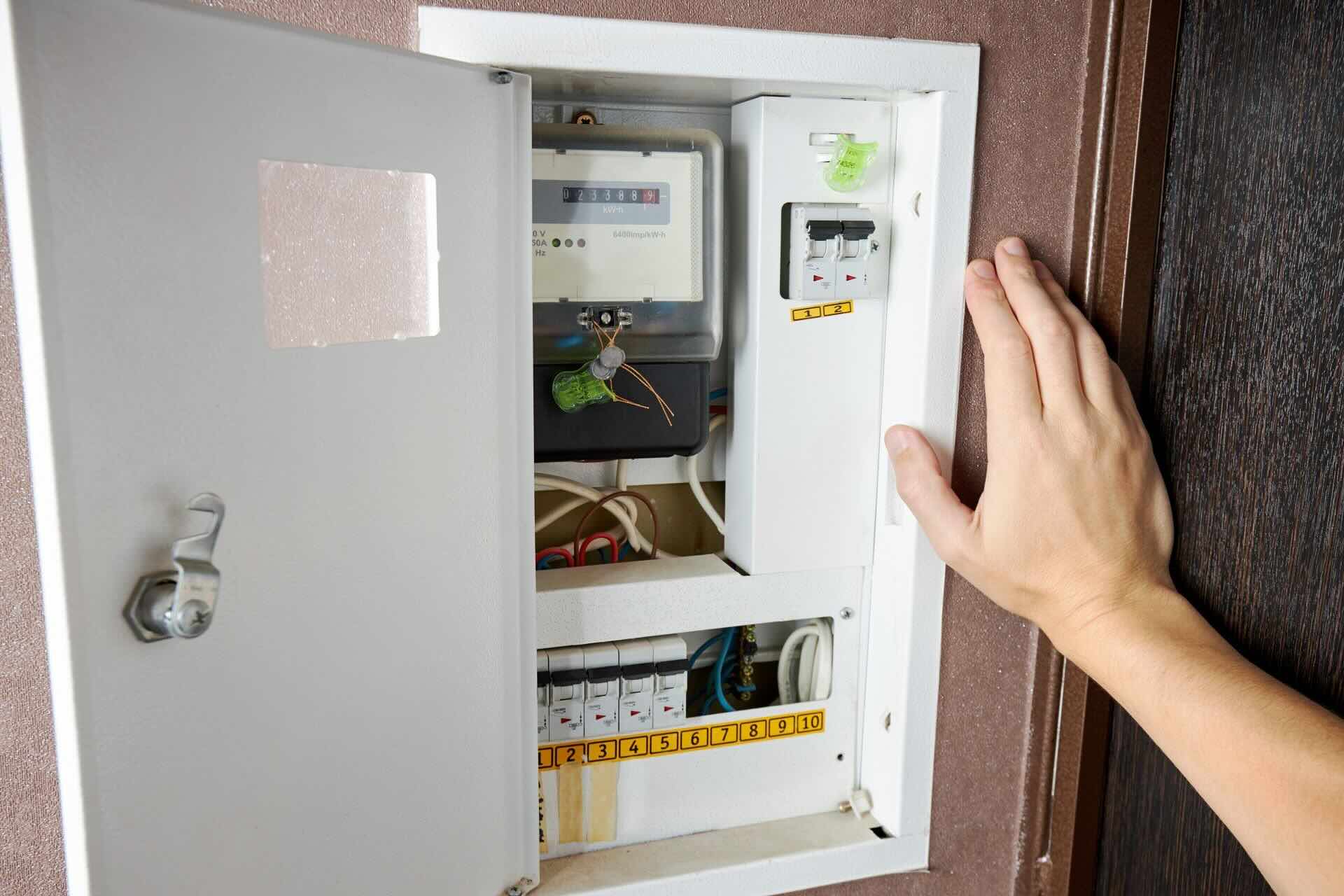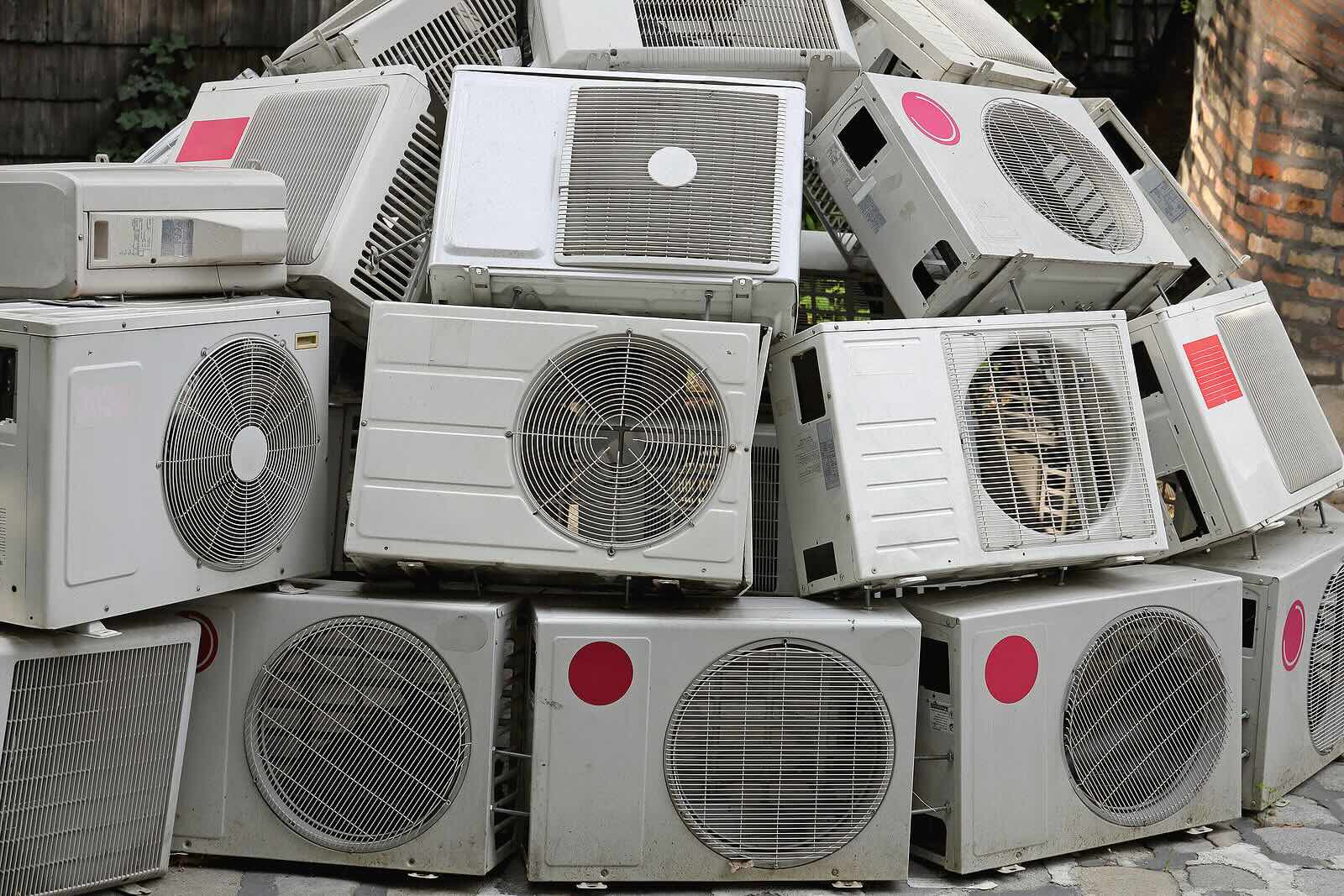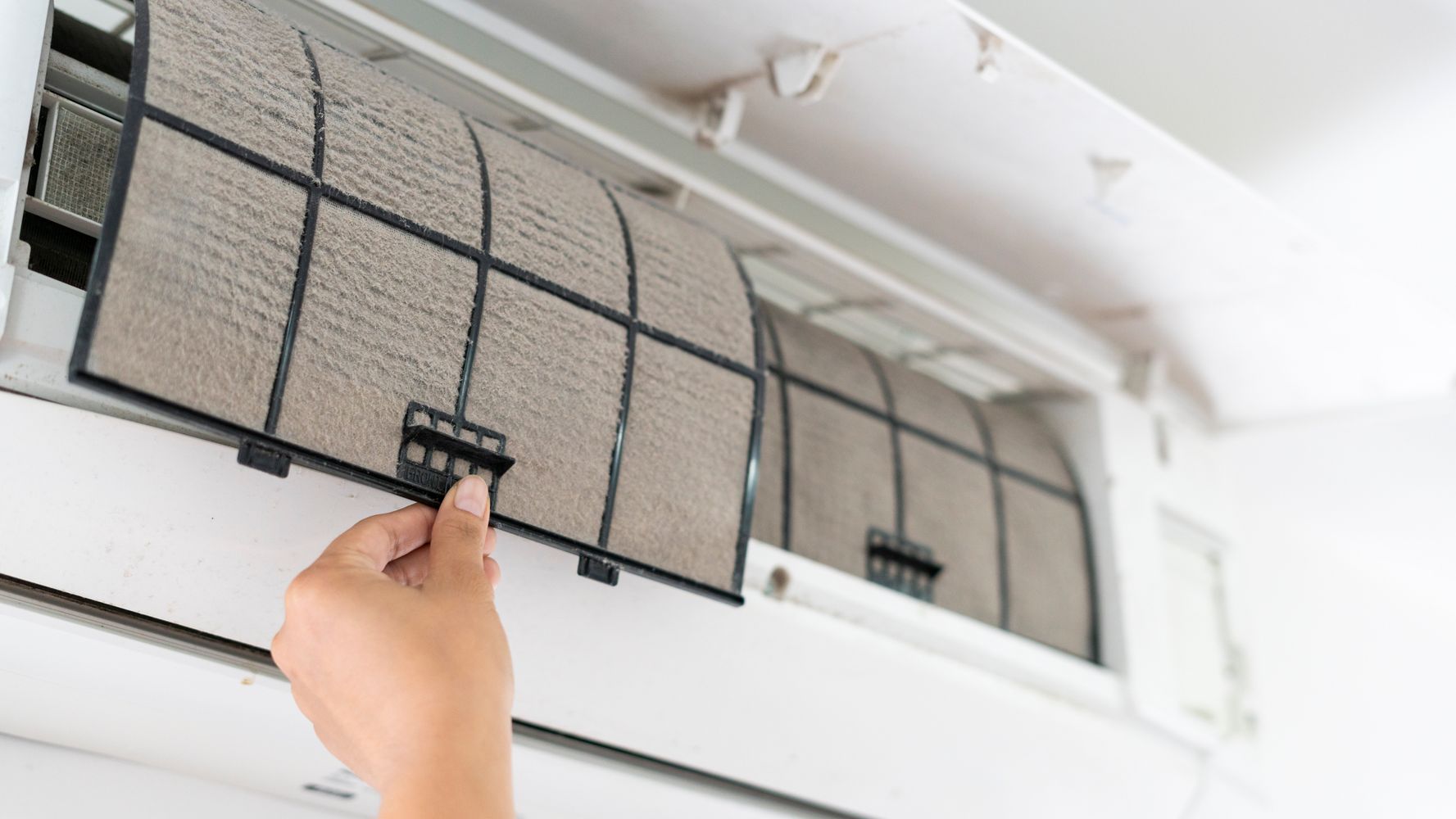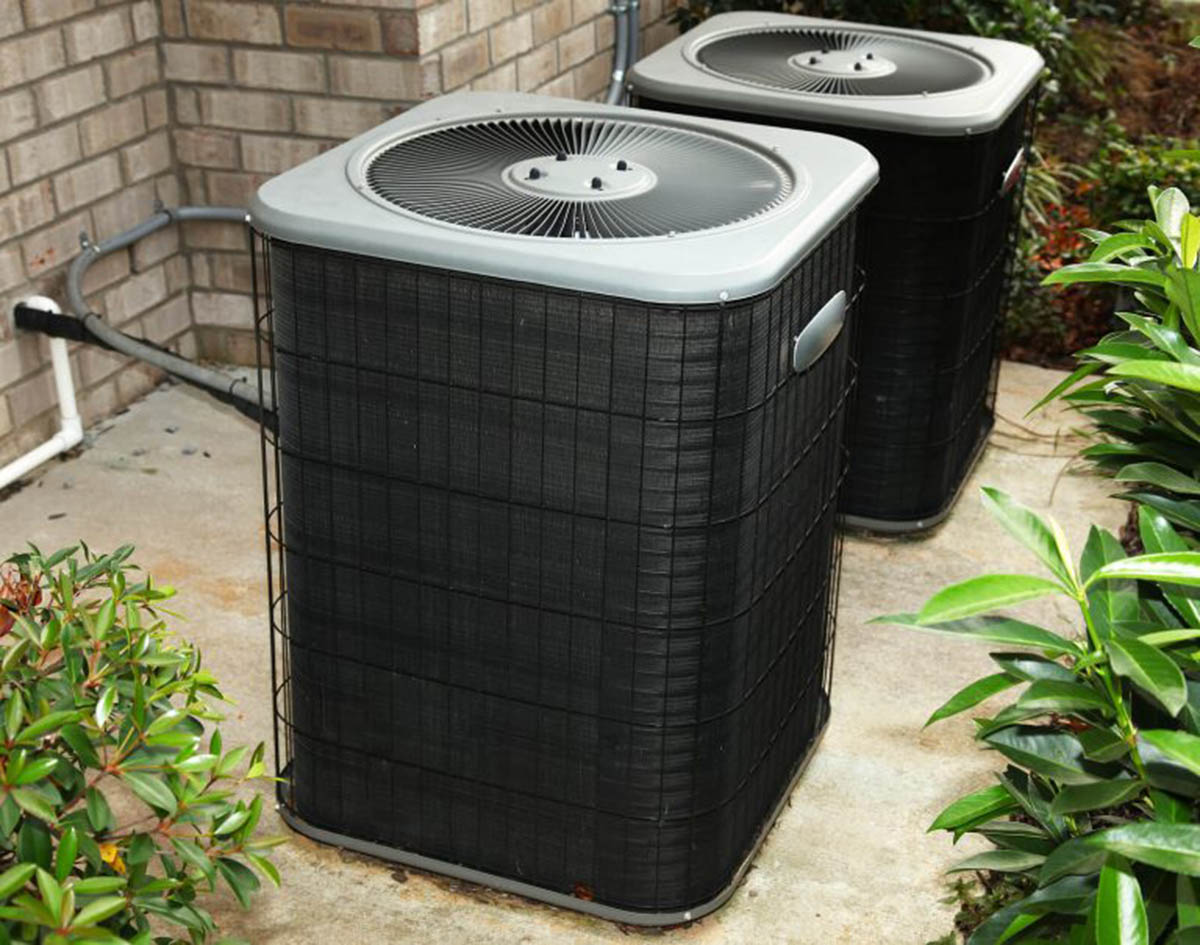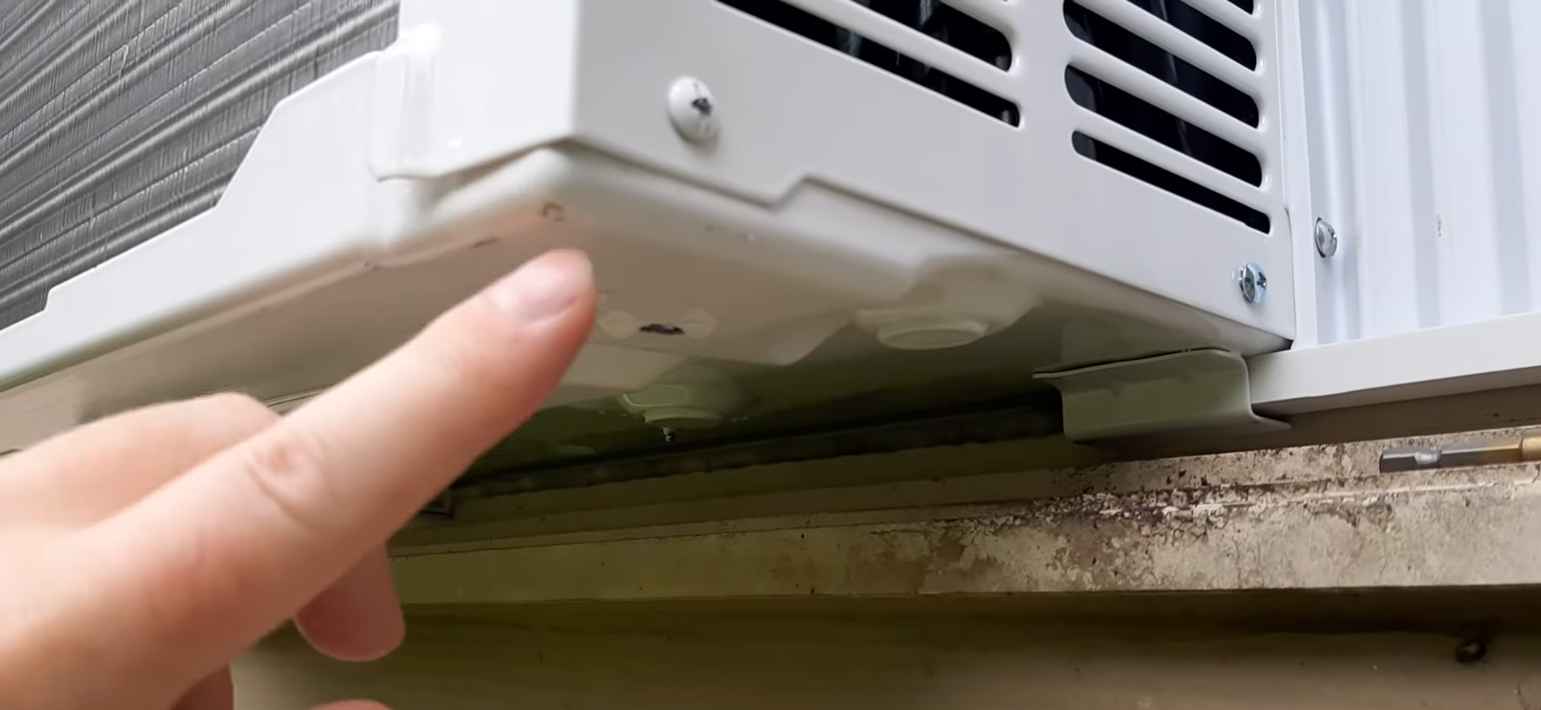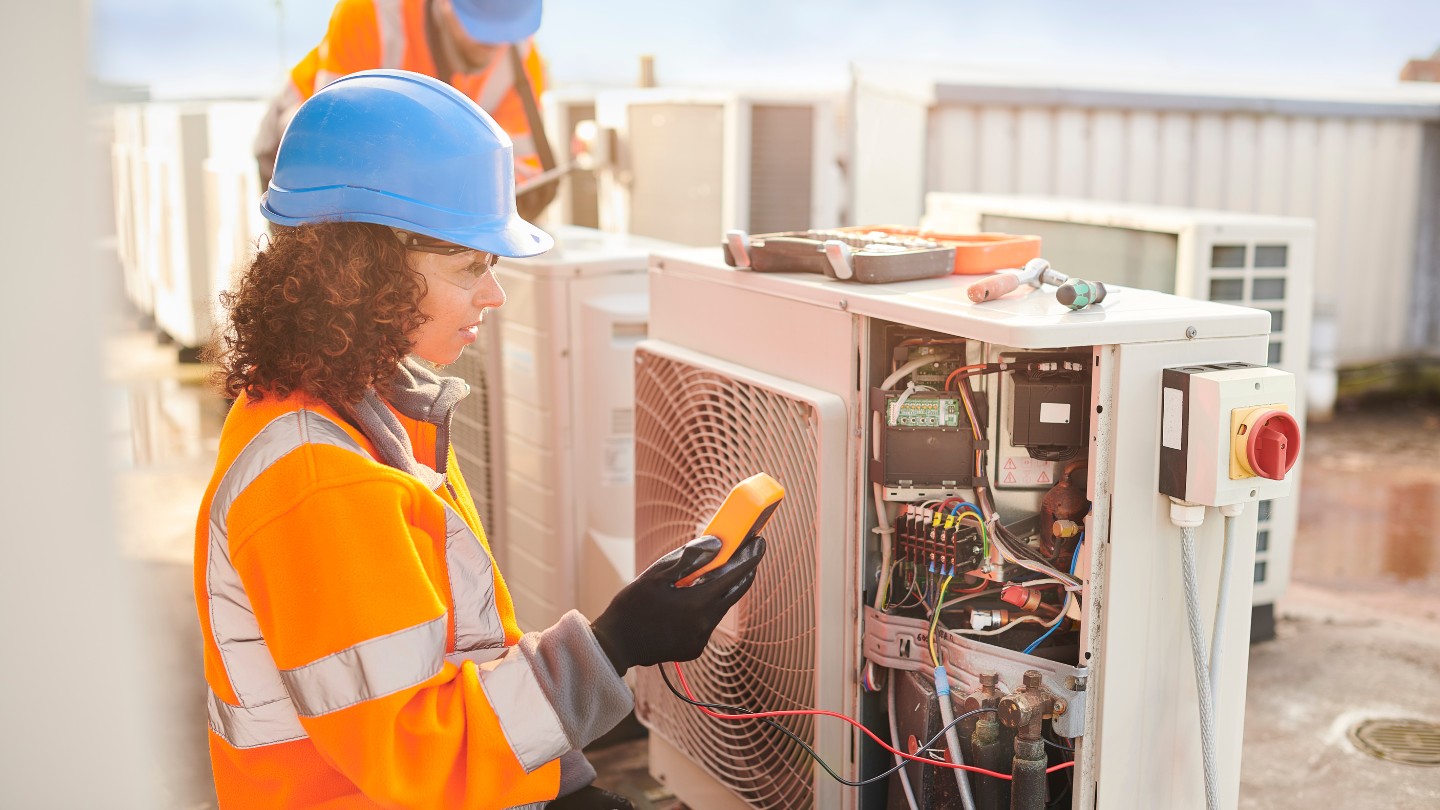Home>Home Maintenance>Where Is The Coil Located On An Air Conditioner
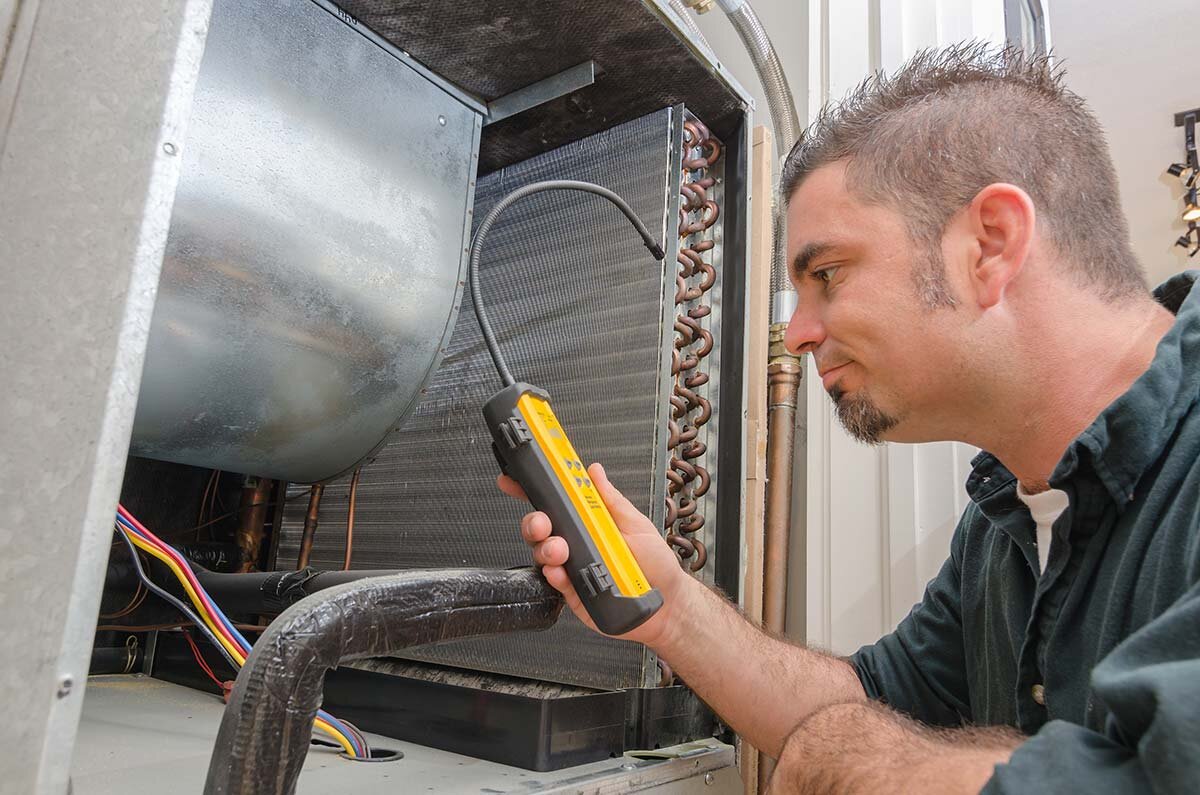

Home Maintenance
Where Is The Coil Located On An Air Conditioner
Modified: March 7, 2024
The coil of an air conditioner is typically located inside the unit, either in the outdoor condenser or the indoor evaporator. Learn more about home maintenance for air conditioners.
(Many of the links in this article redirect to a specific reviewed product. Your purchase of these products through affiliate links helps to generate commission for Storables.com, at no extra cost. Learn more)
Introduction
Welcome to the world of home maintenance! As a homeowner, it’s essential to have a basic understanding of the various components that make up your home, including your air conditioner. One crucial component of an air conditioner is the coil.
In this article, we will explore the importance of the coil in an air conditioner, the different types of coils found in air conditioners, and most importantly, where to locate the coil in your air conditioning system. So, let’s dive in and unravel the mysteries of the coil!
Before we delve into the specifics of the coil, let’s take a moment to familiarize ourselves with the overall functioning of an air conditioner and its various components.
Key Takeaways:
- The coil in your air conditioner is like a heat transfer point, absorbing heat from inside your home and releasing it outside. Keeping the coils clean and maintained helps your air conditioner work efficiently and saves energy.
- There are two main types of coils in air conditioners: the evaporator coil inside your home and the condenser coil outside. Regular maintenance of these coils is essential for keeping your air conditioner running smoothly and prolonging its lifespan.
Read more: Where Are The Coils On An Air Conditioner
Understanding Air Conditioner Components
An air conditioner is a complex system comprised of several components that work together to cool and circulate air in your home. Understanding these components will help you grasp the importance of the coil in the overall functioning of your air conditioner.
Here are the key components of an air conditioner:
- Compressor: The compressor is the heart of the air conditioner. It compresses and circulates the refrigerant, a substance responsible for absorbing and releasing heat.
- Condenser: The condenser is responsible for dissipating heat from the refrigerant. It is usually located outside the house and is composed of fins and tubes that enhance the heat exchange.
- Evaporator: The evaporator is responsible for absorbing heat from the indoor air. It is typically located inside the house and consists of fins and coils.
- Air Handler: The air handler is the unit responsible for circulating the cool air throughout your home. It consists of a blower, filter, and sometimes, additional heating elements.
- Ductwork: The ductwork is the network of pipes or channels through which the conditioned air flows from the air handler to different rooms in your home.
- Thermostat: The thermostat is the control panel that allows you to regulate the temperature and settings of your air conditioner.
Now that we have a basic understanding of the various components that make up an air conditioner, let’s focus on the role of the coil and why it is a critical component in the cooling process.
The Role of the Coil in an Air Conditioner
The coil plays a vital role in the cooling process of an air conditioner. In simple terms, it acts as a transfer point for heat exchange, allowing the refrigerant to absorb heat from the indoor air and release it outside. The coil is divided into two parts: the evaporator coil and the condenser coil.
The evaporator coil, also known as the indoor coil, is responsible for absorbing heat from the indoor air. As warm air from your home is blown over the evaporator coil, the refrigerant inside the coil absorbs the heat, causing the air to cool down. This cooled air is then circulated back into your home, providing a refreshing and comfortable environment.
On the other hand, the condenser coil, also known as the outdoor coil, plays a crucial role in the heat dissipation process. As the refrigerant carrying the absorbed heat flows through the condenser coil, it comes into contact with the outside air. The heat from the refrigerant is released to the outdoor air, effectively cooling down the refrigerant so that it can start the cooling cycle again.
Without the coil, the heat exchange necessary for cooling your home would not be possible. It is the coil that enables the transfer of heat from the indoor air to the refrigerant, and from the refrigerant to the outdoor air. Therefore, maintaining the coil and ensuring its optimal performance is key to efficient cooling and energy savings.
Now that we understand the role of the coil in an air conditioner, let’s dive deeper into the different types of coils you can find in air conditioning systems.
Different Types of Coils in Air Conditioners
Air conditioners come in various types, and each type may have different types of coils. The two main types of coils found in air conditioners are the evaporator coil and the condenser coil, which we discussed earlier.
Evaporator Coil: The evaporator coil is typically made of copper or aluminum and is housed in the indoor unit of the air conditioner. It consists of a series of interconnected tubes and fins that help maximize the surface area for heat exchange. Copper coils are known for their excellent heat transfer capabilities, while aluminum coils are lightweight and resistant to corrosion.
Condenser Coil: The condenser coil is located in the outdoor unit of the air conditioner. Like the evaporator coil, it is also made of copper or aluminum. Copper condenser coils are commonly used due to their high thermal conductivity, which allows for efficient heat transfer. Aluminum condenser coils are also used in some units as they are lightweight and cost-effective.
Additionally, there are specialized coils used in specific types of air conditioners:
- Heat Pump Coils: Heat pumps are a type of air conditioner that can provide both heating and cooling. They have a reversing valve that allows them to change the flow of refrigerant, enabling them to extract heat from the outdoor air and transfer it inside during colder months. Heat pump coils are designed to perform this dual function efficiently.
- Geothermal Coils: Geothermal systems harness the stable temperature of the earth to provide heating and cooling. Geothermal coils are buried underground, where they exchange heat with the earth. These coils are typically made of copper or high-density polyethylene (HDPE) pipe and are designed to withstand the underground environment.
Understanding the different types of coils in air conditioners can help you better assess the maintenance needs of your specific unit and ensure optimal performance. Now that we know about the various types of coils, let’s move on to the next section to learn about the location of the coil in an air conditioner.
Locating the Coil on an Air Conditioner
The coil in an air conditioner can be located in either the exterior unit or the interior unit, depending on the type of air conditioning system you have. Let’s explore both scenarios:
Read more: What Is An Air Conditioner Coil
Exterior Coil Placement:
In split air conditioning systems, the exterior coil, also known as the condenser coil, is located in the outdoor unit. This outdoor unit is usually placed on the ground or mounted on brackets on the exterior wall of your home. The condenser coil is housed within the metal cabinet of the outdoor unit.
To locate the exterior coil, simply look for the large metal cabinet with vents on the sides, back, or top. This is where the condenser coil is situated. It plays a crucial role in releasing the heat absorbed from the indoor air to the outdoor environment.
Interior Coil Placement:
In split air conditioning systems, the interior coil, also known as the evaporator coil, is located in the indoor unit. This indoor unit is typically installed in a dedicated space, such as a utility closet, attic, or basement.
To locate the interior coil, you’ll need to access the indoor unit. This can usually be done by removing the access panel or grille on the front of the unit. Once you open the unit, you will see the evaporator coil, which is typically positioned above the air handler or blower fan.
It’s important to note that in window air conditioners or portable air conditioners, the coil can be located within the same unit, as these units combine both the interior and exterior components into a single appliance.
Now that you know where to find the coil in your air conditioner, let’s explore how to access it for maintenance and cleaning purposes.
Exterior Coil Placement
In split air conditioning systems, the exterior coil, also known as the condenser coil, is a critical component of the outdoor unit. Its placement and proper maintenance are essential for optimal cooling performance and energy efficiency.
The exterior unit, which houses the condenser coil, is typically located outside the house. It can be positioned on the ground or mounted on brackets attached to the exterior wall of your home. The coil is housed within a metal cabinet, often protected by a grille or louvered panels.
When locating the exterior coil, look for the large metal cabinet with vents either on the sides, back, or top. This cabinet houses the condenser coil and other components, such as the compressor and fan motor.
The exterior coil is strategically placed in the outdoor unit to facilitate the dissipation of heat. As the refrigerant, carrying the absorbed heat from the indoor air, flows through the coil, it comes into contact with the outside air. The heat is then released to the outdoor environment through the process of convection.
The positioning of the exterior coil is designed to maximize heat transfer and ensure efficient cooling. It is essential to keep the exterior unit clear of any obstructions, such as vegetation, debris, or structures, to ensure proper airflow. Restricted airflow can hinder the coil’s ability to release heat effectively, resulting in decreased cooling performance and potential system malfunction.
Regular maintenance and cleaning of the exterior coil are crucial to keep it functioning optimally. Over time, dirt, dust, leaves, and other debris can accumulate on the coil’s surface, creating a barrier that impedes heat transfer. This buildup reduces the coil’s efficiency and can lead to higher energy consumption.
To clean the exterior coil, follow these steps:
- Turn off the power to the air conditioner.
- Remove any visible debris, such as leaves or twigs, from the exterior cabinet.
- Use a soft brush or a vacuum with a brush attachment to gently remove any dirt or dust from the coil’s fins. Be careful not to damage the fins during the cleaning process.
- If the coil is clogged with stubborn dirt or debris, you may need to use a coil cleaner specifically designed for air conditioners. Follow the instructions on the cleaner and rinse the coil thoroughly afterward to remove any residue.
- Once cleaned, ensure that the exterior unit is free from obstructions and properly secured.
Regularly cleaning the exterior coil and maintaining proper airflow will not only improve the cooling performance of your air conditioner but also prolong its lifespan. Remember to consult the manufacturer’s guidelines or seek professional assistance if you are unsure about performing any maintenance tasks.
Now that we have explored the exterior coil placement and maintenance, let’s move on to understanding the location of the interior coil.
Interior Coil Placement
In split air conditioning systems, the interior coil, also known as the evaporator coil, is a crucial component located in the indoor unit of the system. Understanding its placement and ensuring proper maintenance is essential for efficient cooling and optimal performance.
The indoor unit, which contains the evaporator coil, is typically installed in a dedicated space within your home. This space can vary depending on the design of your house and may include a utility closet, attic, basement, or even a specially designed HVAC room.
To locate the interior coil, you’ll need to access the indoor unit. This is usually done by removing the access panel or grille on the front of the unit. The evaporator coil is positioned above the air handler or blower fan, with the air drawn in from the room passing through the coil for cooling.
The placement of the interior coil allows for efficient heat absorption from the indoor air. As warm air from your home is blown over the evaporator coil, the refrigerant inside the coil absorbs the heat, causing the air to cool down. The cooled air is then circulated back into your home through the ductwork, providing a comfortable and refreshing indoor environment.
It is crucial to ensure that the interior coil remains clean and free from dirt or debris buildup. Over time, dust, pet dander, and other airborne particles can settle on the coil’s surface, reducing its efficiency and impeding heat exchange. This can lead to decreased cooling performance and potentially affect indoor air quality.
To maintain the interior coil, follow these steps:
- Turn off the power to the air conditioner.
- Remove the access panel or grille from the indoor unit to access the evaporator coil.
- Inspect the coil for any visible dirt or debris. Gently brush away any loose dirt using a soft brush or vacuum with a brush attachment.
- If there is stubborn dirt or buildup on the coil, you may need to use a coil cleaner specifically designed for air conditioners. Follow the instructions on the cleaner and rinse the coil thoroughly after cleaning.
- Once the coil is clean, replace the access panel or grille securely.
Regular maintenance of the interior coil will help ensure efficient cooling and prolong the life of your air conditioning system. Remember to always follow the manufacturer’s guidelines or consult a professional if you are unsure about performing any maintenance tasks.
Now that we have covered the placement and maintenance of both the interior and exterior coils, let’s explore the access points on an air conditioner that allow you to service the coils.
Coil Access Points on an Air Conditioner
When it comes to maintaining and servicing the coils in your air conditioner, knowing the access points is crucial. These access points allow you to reach the coils and perform cleaning or maintenance tasks effectively. Let’s explore the common coil access points found in air conditioners:
Access Points for the Exterior Coil:
To access the exterior coil, also known as the condenser coil, you’ll typically find the following access points:
- Removable Grille: The exterior unit is usually protected by a removable grille or louvered panels. These grilles can be easily opened or removed, providing access to the condenser coil for cleaning and maintenance purposes.
- Access Panel: In some cases, there may be a designated access panel on the exterior unit that can be removed to access the condenser coil. This panel is typically secured with screws or clips and can be opened to reach the coil.
Access Points for the Interior Coil:
When it comes to the interior coil, also known as the evaporator coil, the following access points are common:
- Access Panel or Grille: The indoor unit is equipped with an access panel or grille on the front. This panel or grille can be easily removed, providing access to the evaporator coil for cleaning or maintenance purposes. Simply open or remove the panel to reach the coil.
- Service Doors: Some air conditioning systems have dedicated service doors on the side or back of the indoor unit. These doors can be opened to access the evaporator coil and other internal components for service or maintenance needs.
When accessing the coils, it’s essential to follow proper safety precautions and turn off the power to the air conditioner before performing any maintenance tasks. Refer to the manufacturer’s guidelines or consult a professional if you are unsure about accessing the coils or performing any maintenance procedures.
Now that we have covered the coil access points, let’s emphasize the significance of regular coil maintenance for the overall performance and efficiency of your air conditioner.
Importance of Coil Maintenance
Regular coil maintenance is crucial for the optimal performance and efficiency of your air conditioner. Neglecting coil maintenance can lead to reduced cooling capacity, increased energy consumption, and potential system malfunctions. Here are some key reasons why coil maintenance is essential:
1. Efficiency:
Coils that are dirty or clogged with debris cannot effectively transfer heat. This reduces the efficiency of your air conditioner, as the system has to work harder and consume more energy to achieve the desired cooling. With regular coil maintenance, you can ensure that the coils are clean and free from obstructions, allowing for efficient heat exchange and optimal cooling performance.
2. Energy Savings:
A clean and well-maintained coil allows your air conditioner to operate more efficiently, resulting in energy savings. By improving the heat transfer process, proper coil maintenance reduces the workload on the system, allowing it to cool your home effectively while consuming less electricity. This not only saves you money on your energy bills but also helps reduce your carbon footprint.
3. Extended Lifespan:
Regular maintenance of the coils helps prolong the lifespan of your air conditioner. A buildup of dirt, dust, and debris on the coils can lead to corrosion, reduced efficiency, and even system breakdowns. By keeping the coils clean and well-maintained, you can prevent unnecessary wear and tear, ensuring that your air conditioner lasts longer and operates reliably for years to come.
4. Improved Indoor Air Quality:
The coils in your air conditioner play a crucial role in removing moisture and airborne contaminants from the indoor air. When the coils are dirty or clogged, they become a breeding ground for mold, bacteria, and allergens. These pollutants can then be circulated back into your home, compromising the indoor air quality. Regular coil maintenance helps prevent the growth of mold and the accumulation of allergens, ensuring clean and healthy air for you and your family.
Read more: Why Do Coils Freeze On An Air Conditioner
5. Preventing Costly Repairs:
By properly maintaining the coils, you can identify and address potential issues before they escalate into costly repairs. Regular inspections allow you to spot any signs of damage or deterioration, such as bent fins, refrigerant leaks, or coil corrosion. Timely maintenance and repairs can help prevent further damage to the coils and other components of your air conditioner, avoiding expensive repairs down the line.
Regular coil maintenance is a simple yet effective way to keep your air conditioner running at its best. It is recommended to schedule professional maintenance annually or semi-annually, depending on your usage and environmental conditions. Additionally, make sure to follow the manufacturer’s guidelines and consult a qualified HVAC technician for any maintenance or repair needs.
By prioritizing coil maintenance, you will not only enjoy better cooling performance and energy savings but also extend the lifespan of your air conditioner, improve indoor air quality, and save on potential repair costs. Now that we’ve explored the importance of coil maintenance, let’s summarize what we’ve learned so far.
Summary
In this article, we’ve explored the crucial role of the coil in an air conditioner, the different types of coils found in air conditioning systems, and where to locate the coil in your unit. We’ve also discussed the importance of regular coil maintenance and its impact on the efficiency, energy savings, lifespan, and indoor air quality of your air conditioner.
Understanding air conditioner components, such as the compressor, condenser, evaporator, air handler, ductwork, and thermostat, provides a foundation for comprehending the significance of the coil. The coil acts as a transfer point for heat exchange, absorbing heat from the indoor air and releasing it outside.
We’ve identified two main types of coils: the evaporator coil and the condenser coil. The evaporator coil absorbs heat from the indoor air, while the condenser coil dissipates heat to the outdoor environment. Specialized coils, such as those in heat pumps and geothermal systems, enable specific functions like heating and utilizing the earth’s stable temperature.
Locating the coil in your air conditioner depends on whether it is the exterior coil (condenser coil) or the interior coil (evaporator coil). Exterior coil placement is typically in the outdoor unit, while interior coil placement is within the indoor unit, above the air handler or blower fan.
To maintain and service the coils, you need to understand the access points. The exterior coil is accessed through removable grilles or access panels, while the interior coil is accessed through panels or grilles on the front or service doors on the side or back of the indoor unit.
We’ve emphasized the importance of regular coil maintenance, including cleaning the coils and ensuring proper airflow. Cleaning the coils removes debris and dirt buildup that can hinder heat exchange, resulting in decreased efficiency and increased energy consumption. Regular maintenance also extends the lifespan of your air conditioner, improves indoor air quality, and helps prevent costly repairs.
By prioritizing coil maintenance and following manufacturer guidelines, you can enjoy optimal cooling performance, energy savings, and clean indoor air. Regular professional maintenance or inspections are recommended to ensure proper coil maintenance and address any potential issues promptly.
Now armed with this knowledge, you are well-equipped to take care of the coils in your air conditioning system and enjoy a cool and comfortable home all year round!
Frequently Asked Questions about Where Is The Coil Located On An Air Conditioner
Was this page helpful?
At Storables.com, we guarantee accurate and reliable information. Our content, validated by Expert Board Contributors, is crafted following stringent Editorial Policies. We're committed to providing you with well-researched, expert-backed insights for all your informational needs.
